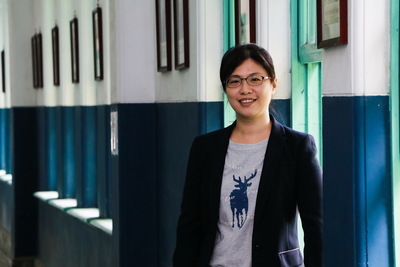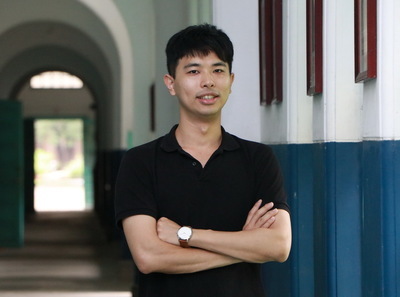A research team led by Professors Jan-Chi Yang and Yi-Chun Chen of the National Cheng Kung University (NCKU) physics department has made a significant leap in the manipulation of next-generation memory materials.

Professor Yi-Chun Chen

Professor Jan-Chi Yang
With the support of the Ministry of Science and Technology, they have developed bismuth ferrite (BiFeO3), a multi-digit memory material which is capable of recording eight logic states (0-7) simultaneously in a single memory unit. Multi-digit memory devices permit information to be stored at densities that far exceed those of conventional 1-bit memory systems (which are characterized by two operating states: 0 and 1). The NCKU research team has developed a novel technology that allows for non-contact (i.e., optical) control over multiple memory states. The application of multi-digit materials in conjunction with light control technology can greatly reduce memory storage volume and energy consumption/dissipation levels compared to existing memory devices. The application of light controllable multi-digit memory to artificial intelligence systems and cloud computing is expected to reduce delays in data reading and boost computational efficiency.
This technology represents a revolutionary breakthrough that is sure to advance efforts to miniaturize multifunctional nano-devices in the near future. A report of this work was published on May 6th in the prestigious international peer-reviewed journal “Nature Materials”.
Breakthrough: Novel alternative for information technology
Smart technologies, the Internet of Things, cloud computing, artificial intelligence, and big data analytics are booming, and data storage is a key component of all of these systems. Ultra-high-performance computing platforms will require the development of reliable storage systems with (1) large-capacity, (2) high-speed access, and (3) energy-savings with a small form factor. Conventional memory systems employ two logic states: 0 and 1. Within this framework, memory density can only be increased by reducing the size of components; however, there are physical limitations to this process. Novel materials with multiple logic states and new access technologies will be key to the further development of information technology.
One research group in NCKU has made significant advances in the development of multi-digit memory materials to address the aforementioned memory bottleneck. The multiferroic material BiFeO3 achieves multi-digit memory operations based on the spontaneous electric dipole moment and electron spin arrangements. Team leader Chen described how the electrical, magnetic, and antiferromagnetic orders of BiFeO3 make it possible to record eight logic states in a single storage unit. Theoretically, it should be possible to scale down the size of the memory devices to the sub-nano scale without a loss of information. Memory devices based on multiferroic materials are far more stable than existing non-volatile memory devices, which are prone to data loss after power failure.
The most important breakthrough in this research is the development of light tunability in this type of multi-digit material. Conventional thought dictates that light (as an alternating electromagnetic wave) cannot be used to induce specific non-volatile changes in the configuration of memory devices. However, the proposed scheme employs light-induced local deformation, referred to as light-induced flexoelectric effects. Optically controllable memory devices do not require metal electrodes or complex fabrication, which satisfies the engineering ideal “the material is the device”. Light-controllable multi-digit memory represents a paradigm shift for memory development . This material can be directly integrated with advanced optical technologies, such as quantum storage and quantum communications.
The Ministry of Science and Technology (MOST) has consistently encouraged young scholars to pursue innovative ideas, to strive for breakthroughs, and to compete with the best minds in the world. Professor Shieh, Dar-Bin, the deputy minister of MOST, describes Professors Yang and Chen as highly talented young scholars. The outstanding achievements in this study are a demonstration of their ceaseless creativity and an excellent example of fundamental research being performed to de velop materials and tools which propel technological applications into the future. MOST will continue to support developments in fundamental science, and the ministry looks forward to further breakthroughs.
Date: 2019-05-22
Source: NCKU News Center
